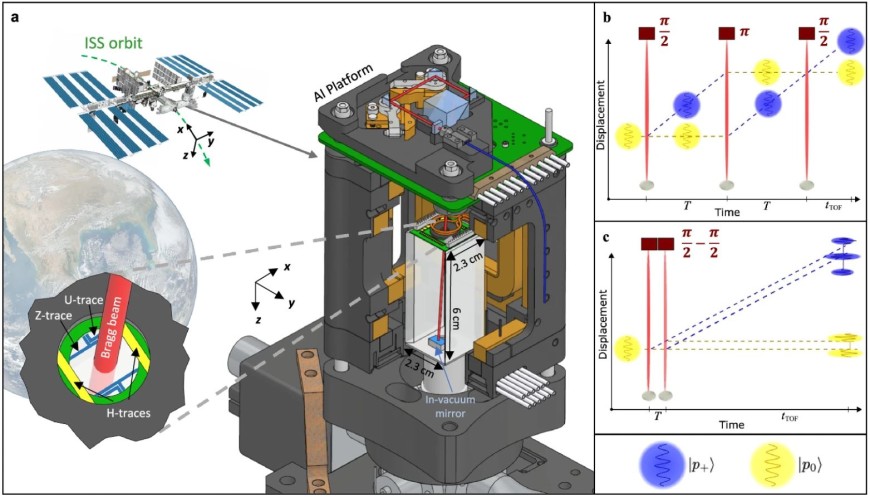Team with TU participation realises quantum sensors in space
Publication by TU researchers in the renowned journal 'Nature Communications'
2024/08/19
An international consortium including the Theoretical Quantum Optics working group led by Professor Enno Giese (Department of Physics at TU Darmstadt) has experimentally realised quantum sensors for the first time on the International Space Station ISS at NASA's Cold Atom Laboratory. The scientists have now published their research results in ‘Nature Communications’.

Ultracold atoms represent a new generation of quantum sensors for measuring gravity. These particularly sensitive and high-resolution sensors can be used in geosciences and planetary sciences as well as in tests of the theory of relativity. They particularly benefit from operation in zero gravity. The Cold Atom Laboratory on the International Space Station (ISS), which is operated by NASA, has realised a matter wave-based sensor in space for the first time with the work that has now been published. This made it possible to analyse the vibrations of the ISS, the expansion of atomic clouds and the momentum transfer of photons. The experiments are the first step towards establishing this technology in space applications. Giese's team proposed experiments within the consortium, which were realised by the partners on the space station. The TU scientists developed proposals for experimental sequences and were involved in analysing the recorded data.
The publication
Williams, J.R., Sackett, C.A., Ahlers, H. et al.: “Pathfinder experiments with atom interferometry in the Cold Atom Lab onboard the International Space Station”, in: Nat Commun 15, 6414 (2024). https://doi.org/10.1038/s41467-024-50585-6
